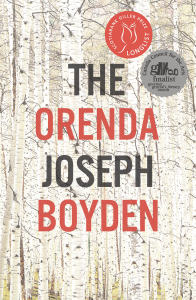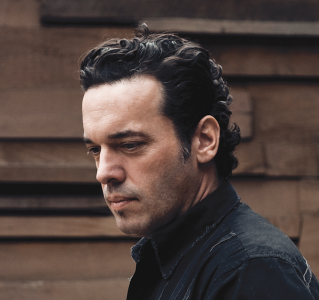
 An intense and jaw-dropping thriller, Giller Prize winner Joseph Boyden’s latest novel, The Orenda, tells a story from three perspectives at the time of first contact in a remarkable and unforgettable tale.
An intense and jaw-dropping thriller, Giller Prize winner Joseph Boyden’s latest novel, The Orenda, tells a story from three perspectives at the time of first contact in a remarkable and unforgettable tale.
A significant departure from his last book, Through Black Spruce, which chronicled the stories of Northern Ontario Crees, The Orenda tells the stories of Snow Falls, a captured Haudenosaunee girl, Bird, her Huron captor, and Father Christophe, a Jesuit from France who has come to the New World to save the souls of the “savages.”
While Boyden writes non-fiction articles on Native themes for publications like the Globe and Mail and Maclean’s Magazine, he said that writing fiction from a First Nations perspective has a lot to do with his own identity.
“My blood is part Anishnabe, so I draw from that in my writing. That is what speaks to me and what I am most passionate about, that part of me. I write other things as well but that is the stuff that has the psychic weight that I crave writing about,” said Boyden.
Expressing these voices with authority required several years of research, which included speaking with many Elders about the history of the Nations he brings to life in his stories. He said this was his greatest concern with the novel.
While the Haudenosaunee are often the book’s so-called “bad guys” off lurking in the woods, Boyden’s lead female character is also Haudenosaunee. He described this protagonist as one of the strongest characters to emerge from his writing.
Saying that he didn’t want to write another Last of the Mohicans, Boyden consulted Canada’s foremost experts on the history and culture of the Haudenosaunee, the Huron and the Jesuits.
Among them was poet George Sioui, a Huron Elder and a University of Ottawa professor.
“I brought him some tobacco and approached him very nervously. I realized that I was nervous because I was asking his permission for something and if he said no, it would have made it very difficult to write this book,” Boyden recounted.
“But, over the course of conversations he said yes, I want you to do this and that was huge, getting that permission. It opened up my ability to do my job as a writer feeling confident rather than pussyfooting around.”
The meticulous research took time, however. Boyden said it took him two-and-a-half years just to write the novel’s first 50 pages. The other 450 pages flowed much more smoothly over the next 14 months. This long period of creation gave him a level of intimacy with his characters as they evolved and he led them through an epic saga at the crux of North American history.
As with his previous works, there are unsettling moments of gore and grotesque detail in The Orenda. This reality was part and parcel of the era and is expressed with ferocious intensity, particularly with the descriptions of what Boyden called “mourning warfare,” the tradition of exacting revenge on the enemy for lives lost among ones’ own tribe.
Boyden acknowledges the graphic violence, but he doesn’t believe any of these scenes are gratuitous, describing them as very personal to the characters.
“One way I looked at this was to keep in mind that the Spanish Inquisition was happening at the same time, so torture was happening all around the world. To the Christians it was to punish, demean and belittle, but to the Haudenosaunee and the Wendat it was to honour and impress and trying to own something they saw in their enemy,” said Boyden.
While he said some of his characters were inspired by historical figures such as the missionary Jean de Brébeuf and Jesuit priest Isaac Jogues, Boyden masterfully blends these figures with fictional characters for plot twists that produce an intense reading experience.
For more information on Boyden and his work, go to: www.josephboyden.com/

